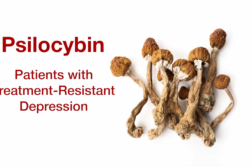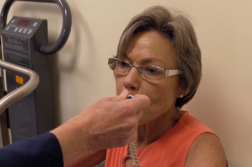SEATTLE, Wash. (Ivanhoe Newswire) — The CDC says the number of reported cases of measles is the highest in a century. Nearly 700 cases have been diagnosed. Infectious disease specialists fear a full-on epidemic in the U.S., which declared measles “eliminated” years ago. Ivanhoe has more on who should and shouldn’t get the vaccine.
As soon as Bobbi Nodell realized she didn’t remember having measles, she made an appointment to get the shot.
“I like to take every vaccination that’s out there because I want to stay healthy,” said Nodell.
The CDC says measles is making a comeback because there are pockets of unvaccinated kids and adults. It’s very contagious, and people travel and can carry the virus with them.
John Lynch, MD, MPH, Associate Professor of Medicine, Division of Allergy & Infectious Diseases, University of Washington School of Medicine shared, “The reason those communities are under-vaccinated range from beliefs about harm, potential harm of vaccines to lack of access.”
The symptoms are high fever, cough, runny nose, red eyes, and a rash. But Dr. Lynch says the more people who are infected, the higher the chance of bad cases.
Dr. Lynch continued, “Those complications include very serious outcomes, including death, including serious brain infections, as well as complications like severe pneumonia, and even bad ear infections.”
Some people shouldn’t get any, including pregnant women, people with weakened immune systems or those who have had a severe allergic reaction to any part of the vaccine. Dr. Lynch said it’s safe for adults to get a shot if, like Bobbi, they just want to be sure they’re protected.
Dr. Lynch says the measles, mumps and rubella, or MMR vaccine is safe and effective. A recent study of half a million people in Denmark and several other studies showed no connection between the vaccine and autism, which is some parents’ fear.
Contributors to this news report include: Wendy Chioji, Field Producer; Ken Ashe, Editor; and Bruce Maniscalco, Videographer.
Free weekly e-mail on Medical Breakthroughs from Ivanhoe. To sign up: http://www.ivanhoe.com/ftk
MEASLES VACCINE: DO YOU NEED ONE?
REPORT #2667
BACKGROUND: Measles is a highly contagious, serious disease caused by a virus. Before the introduction of the measles vaccine in 1963, major epidemics occurred approximately every 2–3 years and measles caused an estimated 2.6 million deaths each year. Approximately 110,000 people died from measles in 2017. It was mostly children under the age of 5 years, despite the availability of a safe and effective vaccine. Measles is caused by a virus in the paramyxovirus family and it is normally passed through direct contact and through the air. The virus infects the respiratory tract, then spreads throughout the body. Measles is a human disease and is not known to occur in animals. Accelerated immunization activities have had a major impact on reducing measles deaths. During 2000 – 2017, measles vaccination prevented an estimated 21.1 million deaths.
(Source: https://www.who.int/news-room/fact-sheets/detail/measles)
SIGNS AND SYMPTOMS: The first sign of measles is usually a high fever, which begins about 10 to 12 days after exposure to the virus and lasts 4 to 7 days. Symptoms in the initial stage can include a runny nose, a cough, red and watery eyes, and small white spots inside the cheeks. After several days, a rash erupts, usually on the face and upper neck. The rash spreads over about 3 days and eventually reaches the hands and feet. The rash lasts up to 5 to 6 days, and then fades. On average, the rash occurs 14 days after exposure to the virus (within a range of 7 to 18 days). Most measles-related deaths are caused by complications associated with the disease. Serious complications are more common in children under the age of 5, or adults over the age of 30. The most serious complications include blindness, encephalitis (an infection that causes brain swelling), severe diarrhea and related dehydration, ear infections, or severe respiratory infections such as pneumonia. Severe measles is more likely among poorly nourished children, especially those with insufficient vitamin A, or whose immune systems have been weakened by HIV/AIDS or other diseases.
(Source: https://www.who.int/news-room/fact-sheets/detail/measles)
THE MEASLES INITIATIVE: The Measles & Rubella Initiative’s (M&RI) efforts have helped save 21.1 million lives and reduced the estimated annual number of measles deaths worldwide. However, further gains will require a concerted effort to improve vaccination coverage. Sustaining the progress in the fight against measles is challenging and the reason why the work of M&RI remains crucial to improving health and saving the lives of millions. Since its founding as an international partnership in 2001, the initiative’s goals have remained the same, which are to reach every child everywhere with safe, effective measles vaccines; work with country ministries of health to strengthen routine immunization systems; train and supply health workers; provide technical assistance to identify cases of disease and respond to outbreaks quickly; and provide necessary financial funding. The initiative’s efforts to support routine vaccination and supplemental immunization campaign efforts resulted in the vaccination of 2.9 billion children in 88 countries from 2000
through 2016.
(Source:https://s3.amazonaws.com/wpagility2/measles/wpcontent/uploads/2019/04/MRI_AnnualSummary_2017-2.pdf)
ADDITIONAL LINK: https://medicalxpress.com/news/2019-05-major-differences-transmission-measles-outbreaks.html
* For More Information, Contact:
John Lynch, MD Bobbi Nodell
jblynch@uw.edu / (855) 557-0555 bnodell@uw.edu / (206) 543-7129



